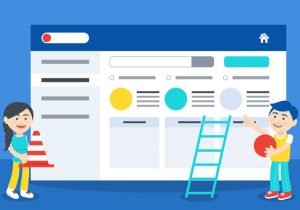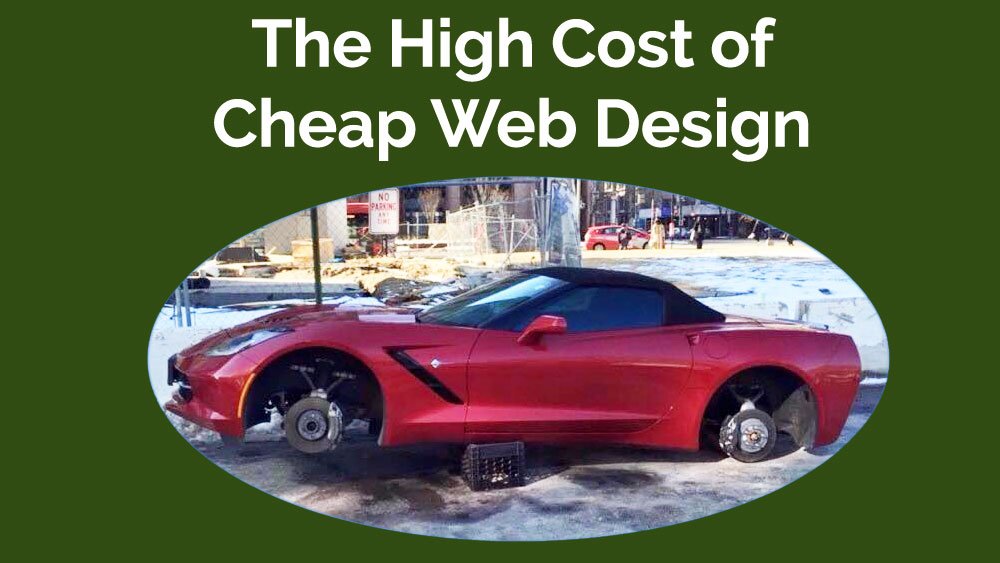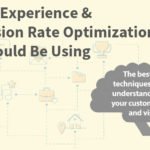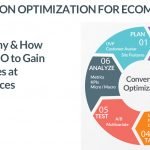I get it. The prospect of spending thousands of dollars on a new website sends shivers up your spine. It feels like a cold hand is reaching into your wallet, taking food money out for no benefit. Admittedly, the cost of building a new online store can be daunting, especially if you own a small business or are new to ecommerce. After all, you can get free or very inexpensive templates for most shopping carts and platforms. There are site builders that make it easy to produce a site that functions. Why shouldn’t you save some money on your site? Money that can be used for marketing.
The truth is that unless you have some design chops, expertise in user experience, SEO, and conversion optimization, the odds are good that your cheap web design is going to cost you far more money than you think you are saving.
 Website builders make it easy
Website builders make it easy
Let’s start with the good news. There are a lot of tools out there that can help you create websites quickly and easily on your own. The bad news is that these tools can mislead store owners into thinking they don’t need to hire a professional designer. Many store owners do just this. Among the most popular builders – Wix and SquareSpace.
I can use a template for my new store
Yes, you can. Every shopping cart on the market has a template, also known as a theme, marketplace. Some are free, some are very inexpensive. Popular carts like WooCommerce, BigCommerce, Magento, and Shopify have large theme marketplaces.
The truth is that even the best designers usually start with a base template as it saves time, which saves you money. So why not do it yourself or hire a low cost, non-US developer?
What do I need to have an online store that sells well?
My assumption is that the entire reason you’re reading this article is that you want your store to sell more products. Ultimately your sales numbers determine whether or not you have gotten your money’s worth from the effort.
Let’s start by talking about what your site needs in order to do well.
Trust and value
You have less than 5 seconds to convince the person who just landed on your site that it is a trustworthy place to do business. While many factors build trust, a website that looks dated or unprofessional will cause people to leave faster than just about anything you do. Can this be accomplished inexpensively? Yes. If you know how to do it.
One of the key factors that keep people on site is visual confirmation that they are indeed shopping in the right place. In the trade, we call this your “unique value proposition” or UVP. It answers the question “why buy this, from this store, right now.” Can you craft the visual cues and messaging to convey your UVP? Yes. If you know how to do it.
Mobile experience
Pretty much every site designer, good or bad, talks about the mobile experience. It is indeed, critically important as many sites see more than half of their traffic coming from phones. While any template or theme you choose should be “mobile responsive” and most make this promise, in our experience, this isn’t always executed well.
We review a lot of website designs and are frequently surprised by how bad some stores look on a phone. Among the errors we find:
- Logos or other text that is too small to read.
- Giant, immediate popups meant to gather an email address that obstruct access to the website.
- No cart button – yes, I do mean that there’s no way to shop a site, then get to the checkout to buy.
- No search.
- Content that exceeds screen width.
- Carousels or other large images that load too slowly.
- Poor speed.
These issues deliver poor user experience, but several can also result in poor search engine results. Google moved to “mobile first” indexing in 2018 so a poor mobile experience can hurt your overall search rankings on all devices. Of course, a poor user experience also results in lower sales.
So yes you want a mobile responsive design, but it needs to be done correctly. Sometimes that means using different images or slightly different elements on the mobile view. Even the text may be different in order to best cope with how people shop on a phone. Some stores may benefit from a mobile app. There are a lot of considerations that a site builder, template, or low budget developer is not focused on.
SEO
About a decade ago, you could build a site and people would miraculously find it. There were also far fewer stores and sites to compete against. That is no longer true. While search engine optimization is a complex topic, one of your core concerns is the technical structure of your website.
Technical requirements for good SEO include speed, image, and javascript optimization, meta titles and descriptions, navigational structure and words, micro-data and alt-descriptions.
Details such as URL structure matter also matter and can be poorly done on many site builders and shopping cart platforms. Little details that seem like a good idea – like huge photos, carousels, and tabbed product views can all negatively impact your SEO.
Even when these features are done well on your cart of choice, knowing how to optimize and configure these features is key. Some issues, such as URL structure can be problematic to change later, so it is best to get this right the first time.
A great user experience
This may sound obvious but this is one area we find rookies, and developers who aren’t led by marketers typically fail at. Your website needs to get their attention and keep it while guiding them easily through the shopping process.
Your site must also be set up for marketing so you can acquire both new customers and more repeat customers.
This is a key area where a design and development firm can really shine. Top firms understand best practices for all that is required to build a site that converts well.
Website builders and some shopping carts fail
In addition to not providing the information you need to use them well, the easiest software to use is often technically limited. As your business needs grow and evolve, you will need a growing suite of tools to run and market your business.
Among the common limitations we run into:
- Payment processors – who processes your credit cards and the mobile wallets (PayPal, ApplePay, etc.) that you can offer matter. Fees vary considerably and are negotiable as you grow. Some products require specialized processors. You need the flexibility to use whomever best fits your needs.
- Technical considerations – you want SEO friendly urls, editable meta-data, speed optimization, and clean, light code.
- Custom features – some stores need or want very specialized features such as product configurators, complex shipping rules, bulk pricing (buy more, save more), customer groups to manage a wholesale/retail business, buyer personalization features and more.
- Integrations – this is a common place where lower cost options fail. As your business grows, you will need more sophisticated tools to manage your inventory, marketing, orders, fulfillment, multi-channel or multi-store abilities, personalization, search engines, customer support and more. Even more common shopping carts have technical limitations.
Hiring the right professional
If you have read this far, then you already have a starter list of questions to ask as you decide who you should partner with for your new store design.
The right company will help you build a solid website plan that addresses your business needs. The best firms also discuss technology options so your business can grow quickly without requiring that you replace your site in a year or two.
They will talk about trust and conveying your value proposition. They discuss content, merchandising and more. Information given is specific to your business and your competitive market. They will help you select the best technology for now, as well as plan for the future.
In summary
That cheap website you were looking for today has the potential to be extremely expensive when it leaves you with poor sales and an inability to grow. A growing business requires an investment. The trick is to invest wisely so you achieve your goals faster. Money saved up front may cost you thousands, or even tens of thousands in business you won’t get because shoppers either couldn’t find your website or weren’t convinced to buy.
References:
The High Cost of Inexpensive Website Design and SEO – a Thorough Guide






